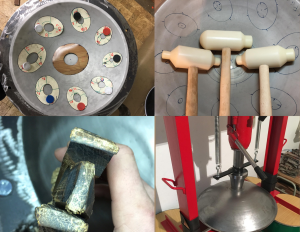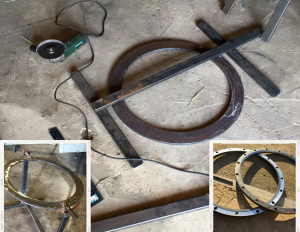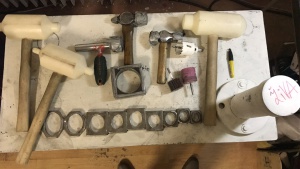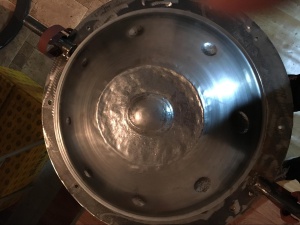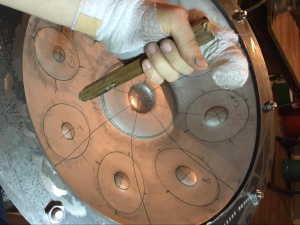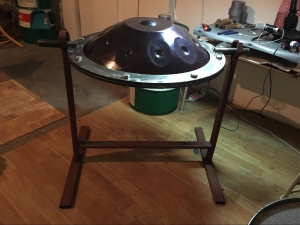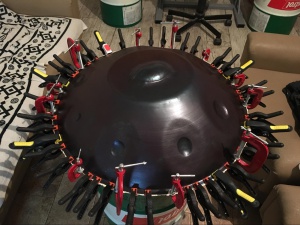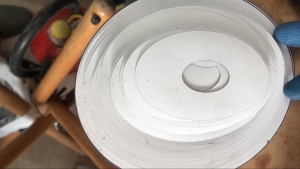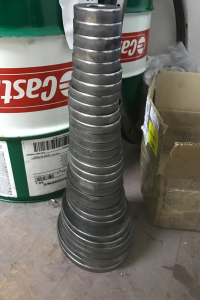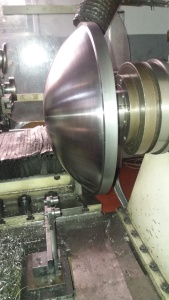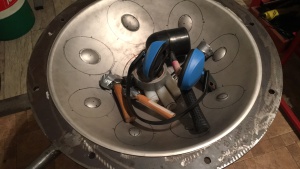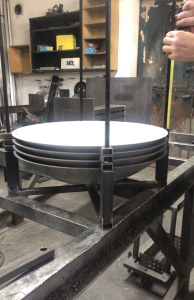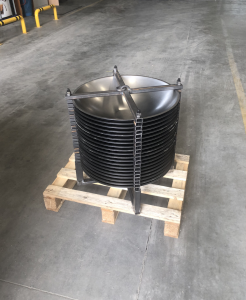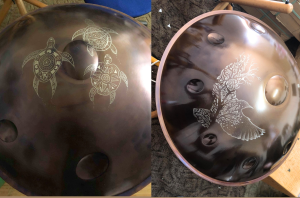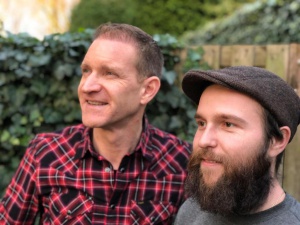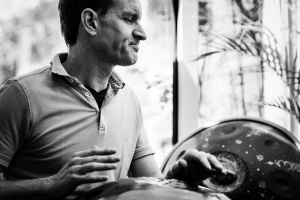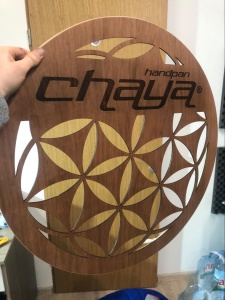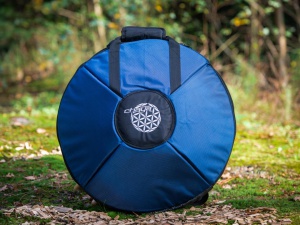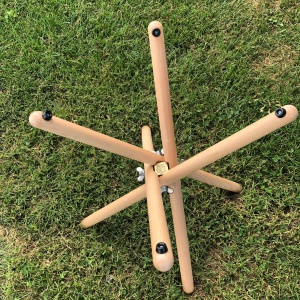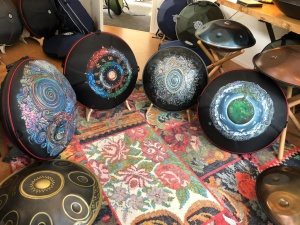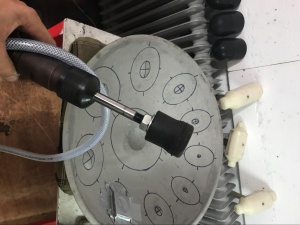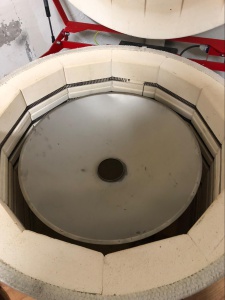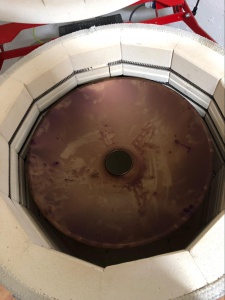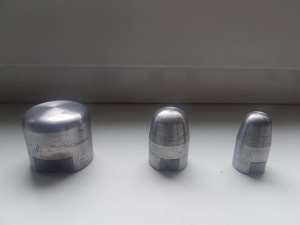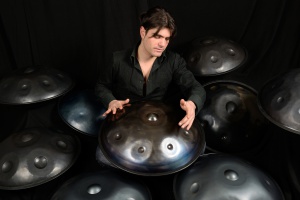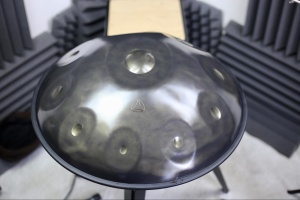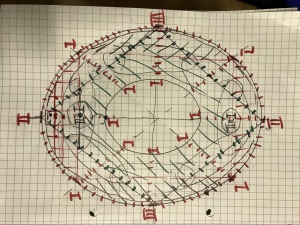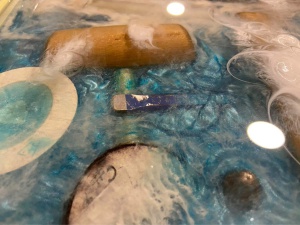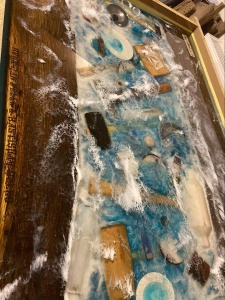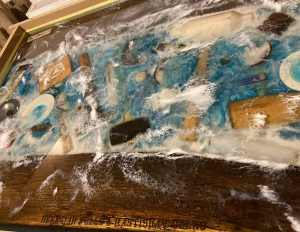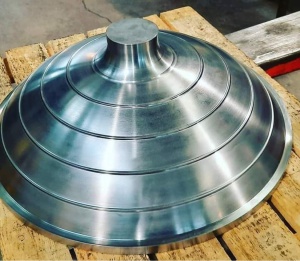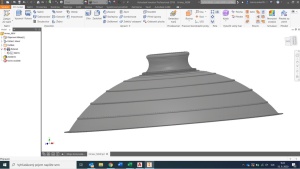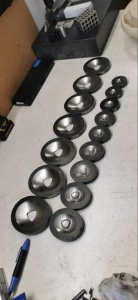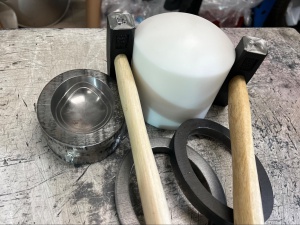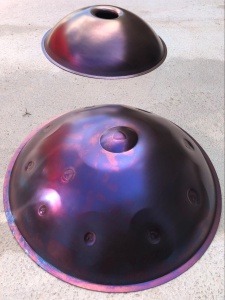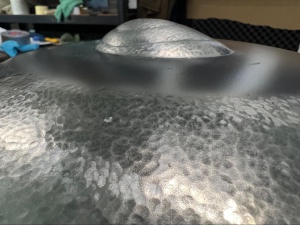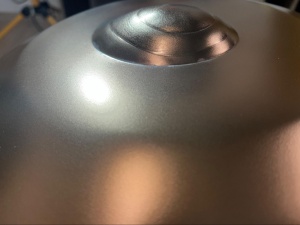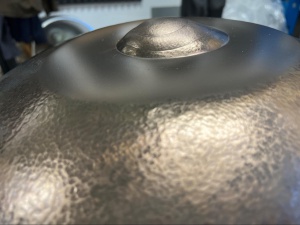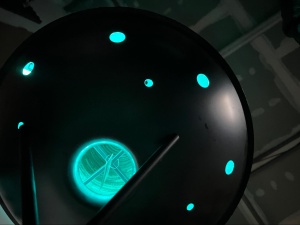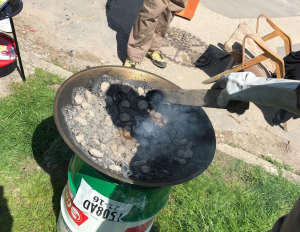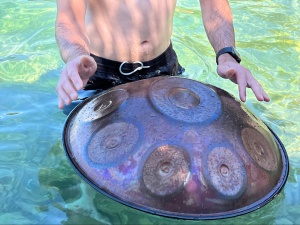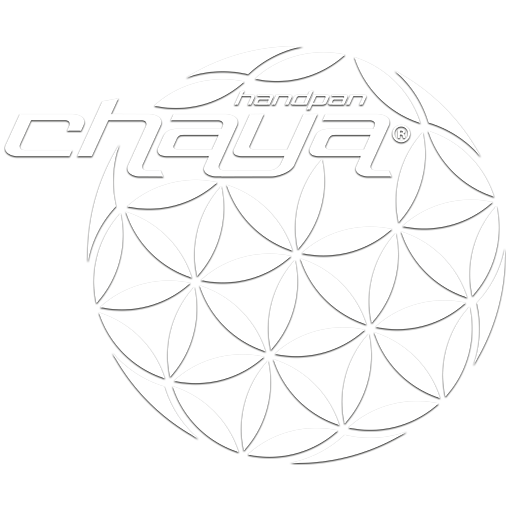
About Chaya® handpan
The origin of Chaya® is actually a series of miracles, including a coincidental encounter between two handpan enthusiasts: builder Rastislav Belko and Henk-Jan Pelle, owner of HandPanShop.
On this page, you can read all about the journey of these two passionate handpan enthusiasts and their ultimate destination to create a unique instrument, that has since become one of the best-selling handpans.
Rastislav
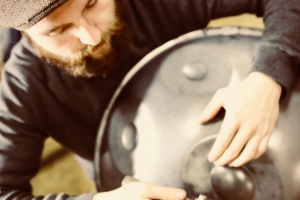 Rastislav - Chaya® handpan builder
Rastislav - Chaya® handpan builder
"I was surrounded by music throughout my childhood, since my father is a music teacher. When I heard a handpan for the first time, I immediately fell in love with the instrument and its sound. I dreamed of creating one for myself. It was a long process and not easy to combine with my busy job as a computer programmer at the time, but in the end I succeeded. Now I can no longer stop creating these beautiful instruments. I just like doing what I am good at and what gives me energy: making beautiful handpans and tuning with attention and dedication, that's where my strength lies."
Rastislav about Henk-Jan: "Besides the fact that Henk-Jan is a successful entrepreneur, he has many more qualities. His patience, helpfulness and sense of detail ensure that customers can find the right instrument to suit them."
Henk-Jan
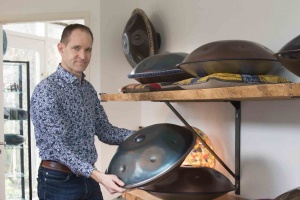 Henk-Jan is a percussionist and a passionate handpan entrepreneur
Henk-Jan is a percussionist and a passionate handpan entrepreneur
"Music plays an important part in my life. I have been playing drums since I was a boy: I played in small ensembles on the street, in various bands in pubs and clubs, and finally in cover bands on big stages. I heard a handpan for the very first time in 2010 and I fell in love with it straight away: I was deeply impressed. After trying to build one for myself, I discovered where my real passion for the handpan lies: to bring people into contact with it. I started the handpan shop in 2011, the first specialty store in Europe. The store is now a concept and an authority in the field.”
Henk-Jan about Rastislav: "Rastislav is a very talented craftsman, who loves his work. He not only works hard and is driven, but he is also just a nice person. He has vision, a strong focus and is constantly looking for improvement. We collaborate respectfully; we complement each other. For us 1 + 1 really does equal 3."
Through the following sections, Rastislav will tell you everything about the creation of the Chaya® Handpan: from the first Handpan to the international recognition that Chaya® received:
Table of Contents:
- Building the necessary tools
- Crafting the first handpan
- Crafting the 2nd generation handpans
- Crafting 3rd generation handpans: Chaya®brand is born
- Continuous Development
The Origin of Chaya®
2016: Building the necessary tools
Location: A small garage in the middle of Europe, Slovakia
'In 2016, there were no physical or online shops selling tools for making handpans. If you were serious about crafting your own handpan, you had to take an adventurous path. Incorporating your ideas into technical drawings to upgrade existing craft equipment or design new equipment. Failure was common, but the feeling of something growing under your hands was much stronger, making you feel alive. That's why I named our first brand ŽIVA, derived from the Slovak word 'Život', meaning 'Life'.
“Success is not final; failure is not fatal: it is the courage to continue that counts“ - Winston Churchill
A good example of my initial attempts is the stand below that I welded together from some materials I found in the garage. Or my first temporary tuning rings that suppressed the resonance so much, hardly allowing a tone to be heard.
But fortunately, some tools were almost perfect on my first attempt. I designed these lightweight tuning rings in 2016 and still use them today. They have a notch to secure the metal shell and openings for stronger screws, allowing for a strong tension to be created.
If you're wondering how I made the sound holes on the bottom of the pan, here's the recipe: the flange, the wheel, and half an hour of tapping. Please, note to add another half-hour to hammer it back, so customers don't cut themselves when carrying and handling the handpan.
In the beginning, I made the sound hole - the Gu - using a press, cone, and flanges, rather than doing it manually. The rest, was all done by hand. I created the depth of the Ding (the bass note), the tone on the top, and the other tone fields using the three small plastic hammers in the photo. To have an idea of where to place these, I used PVC templates for the tone fields.
Here you see my very first set of tools specially designed to create my very first handpan. I keep these photos to remind myself of where, how, and with what tools I once started my dream.
2016: Crafting the first handpan
Location: Relocating from the garage to the underground musical studio
'Next, I took all of my equipment to my new workshop, which was part of a rehearsal studio for garage bands. If you've ever tried it yourself, you know that crafting an instrument is only half the work. The second half is tuning. In this photo, you can see the contents of my 'magic box,' the set of tools that opened the door to discovering something new.
There are sounds we will remember forever. For me, it's the first note I heard after nine hours of tuning. It wasn't stable, balanced, or clear, but it was there! Not just a note, but a kind of voice that was going to teach me something about the nature of steel and how it responds.
'No pain, no gain.' When Arnold Schwarzenegger said those famous words, he probably did not think of handpans. Still, the quote would fit perfectly! Wounds and all kinds of minor injuries are a part of the creation process, and—as you can see, I've been there.
"Craftsmanship is resistance. It is resistance against the cheap, the easy, the disposable. It is resistance against the throwaway culture around us." - James Krenov
Between the first and second round of tuning the handpan, I focused on the delicate process of preparing the bottom shell: cleaning and annealing. By heating the metal, you alleviate the tensions caused by hammering. I still get butterflies in my belly when I reach this stage of the construction process. The metal 'chooses' its final color by itself. So, it's always exciting to see what the ultimate result will be, and it often looks like a gateway to another galaxy, as you can see in the photo.
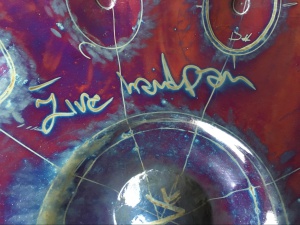
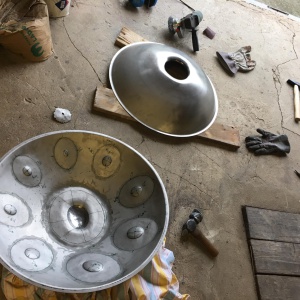
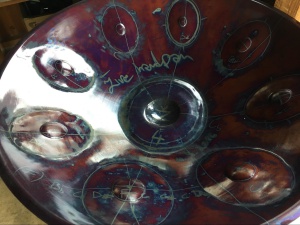
It took me two weeks to complete the first round of the tuning process. After preparing the bottom shell, I began the second tuning round, a week of hammering with a rubber mallet. Then, I could finally glue both shells together and start the final tuning. To my surprise, this tuning only took one day! My very first handpan became a reality. It was far from perfect, but it was alive. In the end, I gave this handpan to a very kind person: the workshop's janitor. Every morning, he would come around three o'clock to check if I was still alive :-)'
2016–2018: Crafting the 2nd generation handpans
Location: Slovakia, workshop
'Usually, while making your first handpan, you learn that there's a lot of room for improvement. You'll likely also experience how addictive the craft can be and how it feels when your mind is in full gear. That's why optimization became the key word during the second phase.
I had to develop a more precise semi-circular metal shape to create a semi-finished product. So, I had to build my own mold again. I also crafted a set of oval-shaped templates to create more precise tone fields. I gave these pieces rounded edges to prevent them from damaging the metal sheet. Every detail counted. For instance, a piece of wooden tool I used to shape the tone fields was replaced with a plastic one. Plastic wears less and made it easier to create more precise tone fields. Small tricks helped tremendously, like equipping the machine-cut templates with magnets so that I could easily keep them in place."
"Form follows function— that is a misunderstanding. Form and function should be one, joined in a spiritual union." - Frank Lloyd Wright
Nitriding (the hardening of metal) is crucial to manufacture a handpan. It affects the final sound and corrosion resistance of the instrument. If I would like my handpans to have a specific sound, which is exactly what I wanted, it was necessary to devise my own nitrocarburizing process. This process should allow me to give the instrument a unique tonal quality. But first, I needed a holder to secure the plates in the nitriding oven.
All the above-mentioned changes made my work more precise and a bit faster. However, it wasn't mass production but an ongoing process of craftsmanship that kept evolving. The handpans of this second generation were stable and also looked better. They could be engraved with beautiful symbols, entirely according to the preferences of their future owners.
Manufacturing a handpan is much easier nowadays; you can order all the necessary tools online and get started. I won't say whether this is good or bad, it comes in a natural way. But personally, I'm incredibly grateful that this option wasn't available in 2016, and I had to figure everything out on my own. It helped me to fully understand the instrument, become a meticulous perfectionist and be passionate about the craft. Ultimately, it gave me the courage to create the third generation of handpans.
2019-2021: Crafting 3rd generation handpans: Chaya®brand is born
Location: Slovakia, Croatia, & Netherlands
Henk-Jan is a percussionist and owner of a handpan shop. In 2013, he heard the sound of a handpan for the first time and, just like Rastislav, instantly fell in love with it. He bought one for himself and started a handpan store. In 2019, he had an appointment in Slovakia to potentially purchase some handpans. Rastislav was asked by the seller to be present to act as an interpreter. At the end of the meeting, Henk-Jan noticed a beautiful handpan in a corner. Not only did he think that the handpan was exceptionally beautiful, but he also loved the sublime sound of it. This handpan had been crafted by Rastislav when he was still an apprentice builder. And so began a close friendship that gave birth to the Chaya® handpan.
'Together with my friend Henk-Jan Pelle, we decided to revitalize the craft of the handpan by creating a new brand of handpan. We renamed Živa to Chaya®. This name is derived from the Hebrew word Chayim, which means 'life’. We used Henk-Jan's musical and entrepreneurial experience trying to achieve this.
In line with the concept of life, we gave our new brand a special logo that represents what we believe in: the interconnectivity of all living beings and the unity of the universe: the Flower of Life.
The logo and the name represented the external change. From a practical point of view, we also started producing handpan-related equipment and products: stands and bags, as well as artwork to decorate the instruments.
Of course, the most significant improvements were related to the production of the Chaya®. As made evident above, every improvement in this craft requires a new set of tools to be made. Now, it was a pneumatic hammer to shape the tone fields and a professional oven with a constant temperature (instead of the pizza oven 😉). But we also transitioned from manual spinning to mechanical spinning, allowing us to achieve a smoother surface and a more uniform shell thickness. This helped us minimize individual differences between the instruments and achieve a more consistent sound.
"When we strive to become better than we are, everything around us also becomes better." - Paulo Coelho
The handpans now not only looked better, but sounded better as well. They began to attract the interest of some well-known professional musicians. If you love handpan music, you probably know the following great talents who have made playing this beautiful instrument popular: Marko Bandera (semi-finalist of Norway's Got Talent) and the ensemble of Dutch players, comprising of Marcel van Cleef, Femke Krone, and Boudine van Slobbe (Slagerij van Kampen).
The most famous artists we've worked with are likely Martin Verdonk from the Netherlands and Loris Lombardo from Italy. Martin, one of Europe's most requested percussionists, has over 40 years of musical experience and has played with artists such as Donna Summer, Lionel Richie, James Taylor, and Chaka Khan. He also performed several times with Prince, including at Wembley Stadium in London.
Loris is a multi-percussionist, director, and teacher at the Handpan & Percussions Academy. He is also the author of the world's first handpan manual. He approached us to gain knowledge about making handpans and now produces his own brand. Together with Loris, we created a tuning diagram for a handpan. Do you think it helped? 😉"
Reminding yourself of the path you've traveled to get where you are now, is essential to remain humble. So, before we proceeded with producing the second generation of Chaya® handpans, we first created a memento: we made a table with all the tools I had used and integrated that into a desktop.
2022: Continuous Development
Locations: Croatia and the Netherlands
'You keep learning in life, and that certainly applies while making handpans. We felt the desire to go beyond the 'known.' To truly set our instruments apart and discover something new in the design and functionality of the instrument. Something that would affect the resonance and sound.}
Regarding the sound, we designed a special sound chamber. Creating this acoustic resonator is very challenging due to the final tuning through its opening. Therefore, we only can produce a maximum of a dozen Chaya’s per year. It's a limited edition, intended only for a few enthusiasts."
"I have no special talent. I am only passionately curious." - Albert Einstein
Regarding the design, we started using specially Ember steel with a high chrome titanium alloy, as well as a nitrided steel plate with a brass coating. We reinforced and adorned the Ding with the Chaya® logo. Instead of engraving this logo, we stamped it directly onto the metal. Additionally, upon request, we can create a beautiful 'dragon skin' surface with specially customized hammerheads. In our latest Chaya’s, you can find the very first asymmetrical Ding.
We really enjoy working creatively with our instruments! Sometimes we take them on vacation (to test their corrosion resistance), to a barbecue (to test if they bring people together), or to dark places (to test if they can serve as decorative lamps).
In the most positive sense, the craft is truly an addiction. Most likely, that's why we're currently experimenting with new shapes, sounds, and techniques. There's a good chance that we'll have to update this story of our origin soon. 😉 We wish you creativity and a lot of pleasure in playing and/or making your own instrument!"





